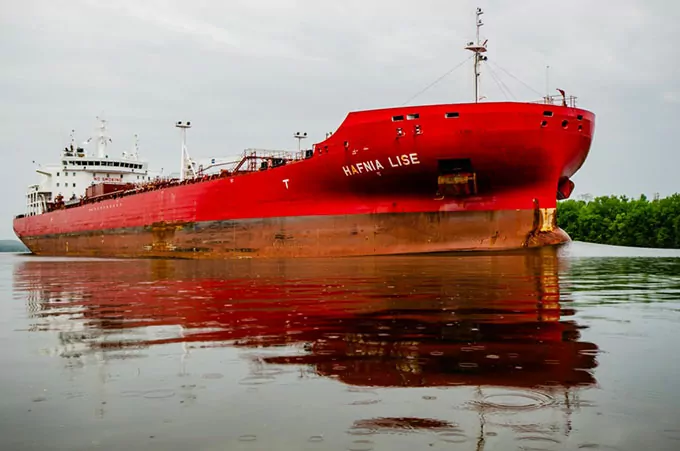Extensive retrofit project focuses on energy efficiency of ships using existing technology.
A unique collaboration between member companies of GSF has highlighted the potential for energy optimization of a mere three-year-old tanker. By implementing the energy-saving solutions, the tanker will achieve a fuel saving of at least 17.5%.

Nordic Green Solutions has been involved in the implementation of the first of three retrofit projects in collaboration with a number of member companies in the non-profit organization Green Ship of the Future (GSF).
The projects aim to investigate the possibilities for energy optimization of different types of ships using existing technology – a theme that is extremely relevant in the international shipbuilding industry, which is challenged by requirements to reduce CO2 and GHG emissions.
17% fuel savings on newer tanks
The first project was carried out on a series-produced tanker in the MR class, which was built in 2016. Despite the fact that it is a three-year ship, the retrofit project has highlighted a number of options for energy optimization, which overall can reduce the ship’s fuel consumption by 17.5% with a payback period of less than 3 years. Thus, the tanker can achieve great economic and environmental gains.
Lack of focus on energy optimisation can be costly
The word “decarbonization” is not to be missed in the shipping industry, and GSF’s project shows that it requires a systematic approach to energy optimization if the emissions of emissions from shipping are to be significantly reduced.
“When a new ship is built, or an existing ship has to carry out a retrofit project, there is a tendency to focus on the economics of the individual solutions rather than systematically working to create complete, technical solutions that are overall most energy efficient. and not least financial ”, says senior project manager in the maritime department at Nordic Green Solutions, Ole Jakobsen.
Ole Jakobsen’s task in the projects is to collect consumption and operational information, etc. as well as make calculations of energy consumption to assess the energy savings and ensure the coherence between the chosen technical solutions.
According to Ole Jakobsen, the retrofit projects, which are carried out in collaboration with GSF, are a good example of how close collaboration between consultants, manufacturers and suppliers ensures optimal, technical solutions that increase energy efficiency and thereby reduce the ship’s fuel consumption and optimize daily operations.
Next projects are underway
Now that the first of the retrofit projects has been completed, it is time to look at the next two projects, which are a RO-PAX from DFDS and an LR tanker from Maersk Tankers. The next two ships are both approx. 10 years old, so here there is expected to be a significant optimization potential.